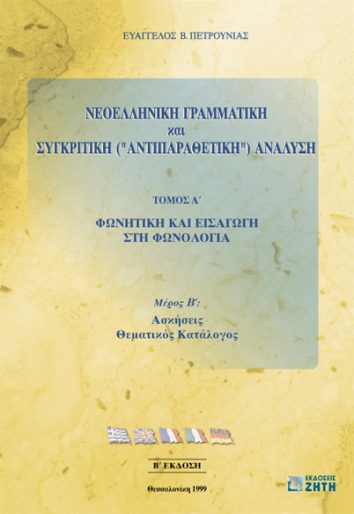
Τhe global age has raised the question of language as the primary medium of human social interaction and communication, and has rendered successful language learning vital for a wide range of language learners (immigrants, international students, individuals in occupations requiring advanced foreign language proficiency, etc). Since all those learners are either little aware of their needs or have a view as to what their needs are, and relatively few teachers are ever provided with detailed background information on their students’ aims in taking a second language course, no language teaching program should be designed without a needs analysis. The procedures associated with the analysis of needs offer a framework for the selection of language content according to the goals of particular learners, and therefore the possibility of creating tailor-made programs, rather than starting with a ready-made syllabus that does not of itself discriminate between differing objectives. In this context, the present study examines the most influential needs analysis models and instruments to detect learners’ language and communication needs, and provides a N.A. Instrument (a questionnaire) based on Hymes’ “SPEAKING” taxonomy, and tested for its validity and reliability.
Contents
1. Introduction2. Origins
- English in the world
- Language policy
3. Theoretical basis of needs analysis:Approaches to teaching and learning taking learners needs into account
- Linguistic and Communicative Competence
- English for Specific Purposed (ESP)
- Ethnograghy of communication
4. From language planning to course design5. Needs and needs analysis
- The learner’s needs
- Needs analysis instruments
- Approaches to needs analysis
- Needs and course design/language content
6. Needs Analysis Models
- Richterich’s model (1973)
- The learner-centred model by Richterich and Chancerel
- Munby’s sociolinguistic model
- Coffey’s model
- Tarone & Yule: Analysis of needs at four levels of generality
- Tokatlidou’s ethnographic model
7. Description of the model
- The Research
- Purpose of the research
- Sample of population
- The research instrument
8. Development and evaluation of reliability of the questionnaire of language and communication needs detection and analysis (the case of intercultural school students)
- Control reliability-Reliability Test
- Split-Half Model
- Guttman Reliability Model
- Parallel Reliability Model
- Strict Parallel Reliability Model
- Tukey’s Test for Nonadditivity
- Questionnaire reliability
9. Conclusions/Discussion
References
Table of figures & tables
Abbreviations
Appendix
Index




